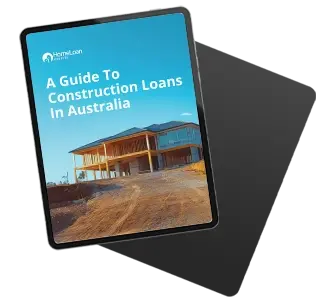If you’re building an investment property on vacant land, can you use future rental income to improve your borrowing power for a construction loan?
The answer is yes, but you have to provide evidence.
Do I qualify?
- 80% of rental income: Banks will use 80% of future rent because they assume that the remaining 20% will be used to pay for property management fees, council rates, strata levies, repairs and to cover for periods of vacancy.
- Vacant land: Some lenders will consider rent income on a “To Be Erected” house if you have a construction contract in place.
- During the building process: The lender that’s providing your construction loan will likely use the lower your rental appraisal from a real estate agent and their on completion valuation.
Future rental income is what professional investors use to increase their borrowing capacity for a construction loan.
Be careful! Banks will use the lower of the rental appraisal and their own on completion rental estimate.
Others will only accept rental income that you’re currently earning.
Learn more construction loan tips and call us on 1300 889 743 if you’re in the process of building or intend to build on vacant land soon.
Alternatively, complete our online enquiry form, and we can assess your situation in full to let you know if you qualify for a construction loan.
Getting Approved For A Construction Loan in Australia
A full construction loan guide with common mistakes and how they can be avoided.

Disclaimer: Over the next few days, you’ll receive additional guides to help you on your homebuying journey. Occasionally, you’ll receive carefully curated home-buying tips, offers & schemes, and news articles. You can unsubscribe any time you want. View our Privacy Policy
What evidence do I need to provide?
- A fixed price building contract with a registered builder.
- Development Approval (DA) and council-approved plans.
- Rental appraisal from a real estate agent.
The rental appraisal will generally say something to the effect of:
On completion, we speculate that this property can be rented for $X per week.
For example, for a $700,000 townhouse with a rental yield of 4.5 %, the proposed rent income will be around $606 per week.
Some lenders are less conservative with using proposed rent than others, recognising that during the construction process you’re only required to pay interest only at each progress payment.
It’s only at the final drawdown that your construction loan reverts to principle and interest (P&I) repayments.
Future rental income on an off the plan property
Yes, some lenders will consider this!
The reason is that you can only apply for an off the plan home loan until at least 3 months before completion.
This makes it more reasonable for a lender to consider a future rental appraisal than if completion was over 18 months away.
For off the plan purchases, in particular, lenders will be wary of using future rent if vacancy rates are particularly high.
Have a read of our off the plan page so you can improve your chances at loan approval and avoid the pitfalls.
Negative gearing on proposed investment property
You can further increase your borrowing capacity by choosing a lender that will take negative gearing benefits into account.
Generally, this relates to the on completion value of the property and related purchasing costs including conveyancing, advertising and stamp duty.
Read more about negative gearing benefits here and speak with your accountant about what you can claim.
Future rental income vs rental income for existing property
Did you know that rental yields for a newly-built property can be higher than the rental returns on an existing property?
It all comes down to choosing new locations that are marked as growth suburbs, that is, locations that will benefit from new infrastructure, new, schools and community facilities, and other growth indicators.
By looking past affluent suburbs or locations with good historical growth, you may also find that it’s cheaper to build rather than buying existing real estate and renovating.
Spread your risk to keep investing
Each lender has their own investment lending requirements and mortgage exposure limit.
On top of that, mortgage insurers have their own risk appetites for certain properties and locations.
Professional investors find that the best solution is to spread their risk across multiple lenders as part of a well-executed mortgage strategy.
A good mortgage broker will help you to build this strategy so you can continue pursuing your investment goals.
Discover if you qualify for a loan
Call us on 1300 889 743 or fill in in our online enquiry form and we can let you know how much you can borrow for your investment property construction loan.
